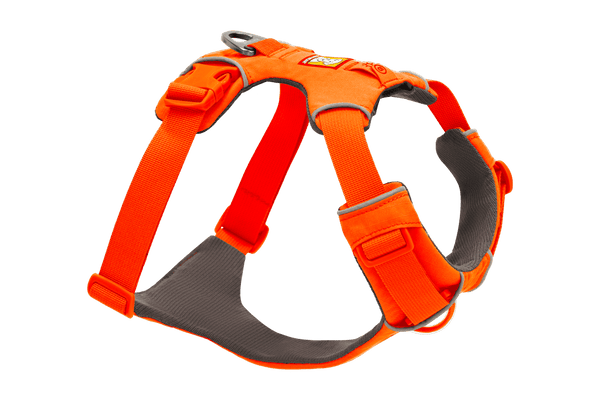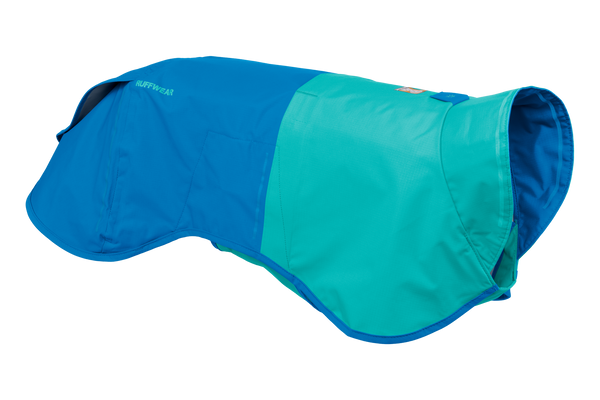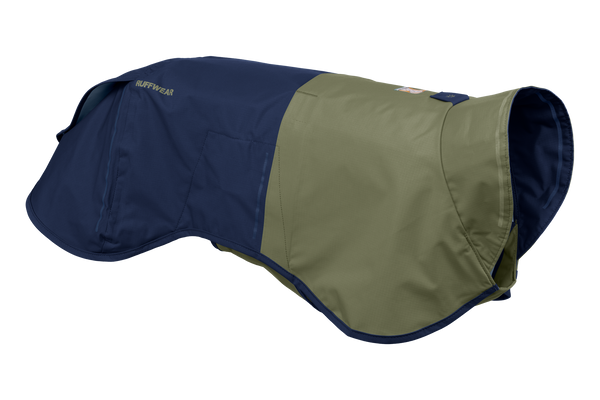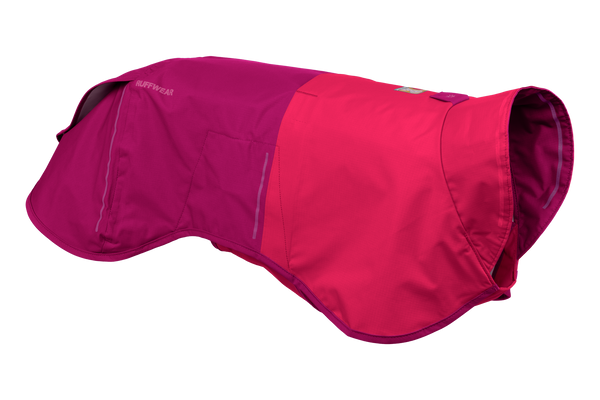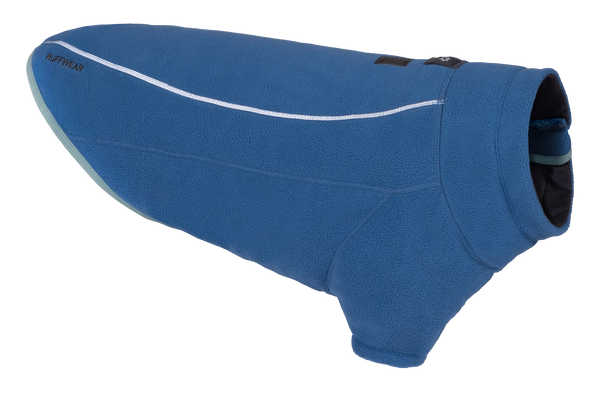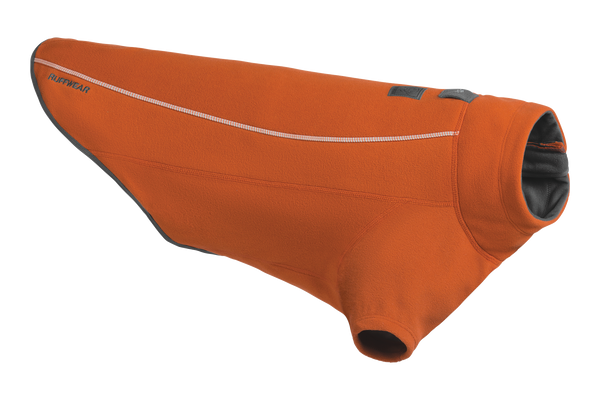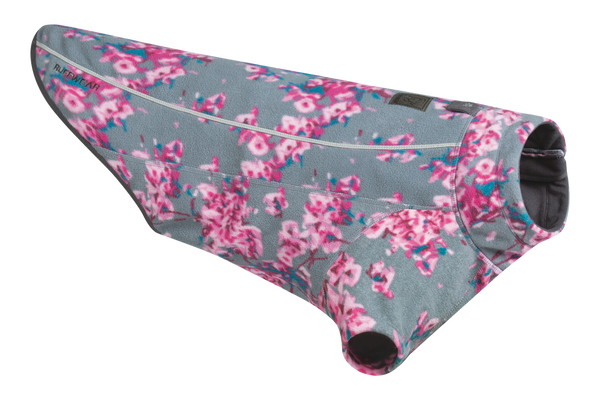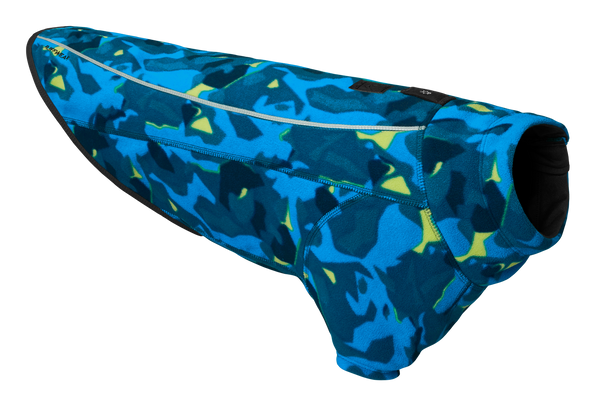Tipps für Abenteuer bei kaltem Wetter und Erste Hilfe für Hunde
Es gibt nichts Schöneres, als Ihrem besten Freund dabei zuzusehen, wie er neben Ihnen durch den frischen Schnee springt (oder schnorchelt), oder den Nervenkitzel zu erleben, auf Langlaufskiern von einem glücklichen Hund gezogen zu werden. Aber ein Winter im Freien mit Ihrem Hund bringt seine ganz eigenen Herausforderungen mit sich – kurze Tageslichtstunden, kalte Temperaturen, nasses Wetter und scharfe Skikanten können Ihr Abenteuer schnell verkürzen. Im Folgenden finden Sie einige Sicherheitshinweise für Pulverschneehunde, damit Sie eine tolle Zeit haben können, ohne den Tag in der Tierklinik beenden zu müssen!

Fotos bereitgestellt von Ruffwear-Botschafterin Dr. Bronwyn Fullagar
Berücksichtigen Sie zunächst die Kältetoleranz Ihres Hundes. Ist Ihnen aufgefallen, dass nicht alle Hunde gleich sind, was ihr Fell betrifft? Während arktische Rassen (Huskys, Malamutes) und ihre wilden Vorfahren (Wölfe, Kojoten) das Äquivalent eines hochwertigen Schichtsystems tragen, tragen andere Rassen ein T-Shirt! Sehr junge oder sehr alte Hunde spüren die Kälte stärker als gesunde Erwachsene, und sehr kleine Hunde neigen dazu, schneller zu frieren als größere. Es ist eine gute Idee, im frühen Winter einige Testabenteuer draußen mit Ihrem Hund zu unternehmen – kurze Aktivitäten wie Laufen oder Langlaufen, bei denen die Möglichkeit besteht, früh umzukehren oder zum Aufwärmen hineinzugehen –, um eine Vorstellung davon zu bekommen, wie lange Ihr Hund bei unterschiedlichen Temperaturen bequem draußen trainieren kann.
Unterkühlung
Dies ist ein potenziell lebensbedrohlicher Zustand, bei dem die Körpertemperatur eines Hundes unter 35 °C (95 °F) fällt. Hunde, die sich über längere Zeit im Freien aufhalten, müde oder hungrig sind oder still stehen, insbesondere bei nassem oder windigem Wetter, sind am stärksten gefährdet.
Anzeichen, auf die Sie achten sollten: Starkes Zittern, gefolgt von keinem Zittern, Schläfrigkeit, Lethargie und Schwäche, Fell und Haut, die sich kalt anfühlen. In fortgeschrittenen Fällen entwickeln Hunde eine verlangsamte Herzfrequenz, blasse Schleimhäute, Schwierigkeiten beim Gehen und schließlich Bewusstlosigkeit.
Behandlung: Nehmen Sie Ihren Hund aus der kalten Umgebung und bringen Sie ihn in einen warmen Raum. Trocknen Sie Ihren Hund gründlich mit Handtüchern oder einem Föhn auf niedriger Stufe. Wickeln Sie Ihren Hund in eine warme Decke und umgeben Sie ihn mit warmen Wärmflaschen, die in Handtücher gewickelt sind. Achten Sie darauf, keine warmen Gegenstände direkt auf die Haut Ihres Hundes zu legen. Lassen Sie Ihren Hund warme (nicht heiße) Flüssigkeiten trinken. Überprüfen Sie die Rektaltemperatur Ihres Hundes mit einem Thermometer. Wenn sie unter 35 °C liegt oder Ihr Hund lethargisch wirkt oder nicht reagiert, bringen Sie ihn sofort zur Untersuchung zum Tierarzt.
Präventionsstrategien: Halten Sie Ihren Hund im Schnee warm, indem Sie ihm einen isolierenden Hundemantel anziehen, der seine Brust bedeckt. Nehmen Sie für den Fall eines Wetterumschwungs oder einer unerwarteten Verzögerung einen zusätzlichen Mantel mit. Machen Sie Pausen, die vor Wind und Schnee geschützt sind, und legen Sie eine Matte in den Schnee, auf der Ihr Hund liegen kann. Packen Sie für Abenteuer, die länger als eine Stunde dauern, energiereiche Snacks und Wasser für Ihren Hund ein. Achten Sie darauf, ob Ihr Hund draußen zittert, und ziehen Sie in Erwägung, Ihr Abenteuer früher zu beenden oder Schutz zu suchen, wenn Ihrem Hund kalt ist.
Erfrierung
Bei kalten Temperaturen (<0 °C oder 32 °F) reduzieren sowohl Menschen als auch Hunde die Blutzufuhr zu ihren Extremitäten, um die Wärme in der Nähe der lebenswichtigen Organe im Körperkern zu bewahren. Längere Zeiträume mit reduzierter oder fehlender Blutzufuhr können zu schweren Verletzungen und sogar zum Tod dieser Regionen führen. Am meisten gefährdet sind die Ohren, Nasen, Schwanzspitzen und Vorhäute von Hunden. Aber warum bekommen nicht alle Hunde Erfrierungen an den Füßen, wenn sie barfuß im Schnee laufen? Die Antwort liegt im einzigartigen Kreislaufsystem (Blutflusssystem) der Hundepfoten, das, wie sich herausstellt, dem von Wölfen und Polarfüchsen sehr ähnlich ist.
Erstens ermöglicht eine einzigartige Anordnung von Blutgefäßen, der sogenannte Gegenstrom-Austauschmechanismus, dass kühles venöses Blut, das von den Pfoten zum Herzen zurückfließt, durch einströmendes arterielles Blut erwärmt wird. Dadurch bleibt die Körpertemperatur des Hundes im Kern erhalten, selbst wenn die Pfoten im eiskalten Schnee stehen. Zweitens weitet sich ein spezielles Netzwerk von Blutgefäßen nahe der Oberfläche der Ballen, wenn die Oberflächentemperatur der Pfoten unter 0 °C (32 °F) fällt, wodurch eine kleine Menge warmen Blutes regelmäßig zur Oberfläche der Ballen fließen kann. Das Ergebnis: ein warmer Körperkern und kühle (aber nicht eiskalte) Pfoten!
Anzeichen, auf die Sie achten sollten: Blasse, graue oder bläuliche Verfärbung der Haut an den Extremitäten, Kälte oder Sprödigkeit der betroffenen Stelle bei Berührung, Schmerzen und Schwellungen beim Erwärmen der Stelle, Blasen oder Hautgeschwüre, geschwärzte oder abgestorbene Haut (Tage nach Kälteeinwirkung).
Behandlung: Wenn Sie vermuten, dass Ihr Hund Erfrierungen erlitten hat, suchen Sie sofort einen Tierarzt auf. Behandeln Sie Unterkühlung (siehe oben). Sie können versuchen, die erfrorene Haut vorsichtig mit Ihren Händen zu erwärmen, aber das Erwärmen muss langsam erfolgen, um weitere Schäden zu vermeiden. Verhindern Sie, dass Ihr Hund erfrorene Stellen selbst verletzt. Widerstehen Sie der Versuchung, Schmerzmittel für Menschen zu verabreichen, denn diese sind für Hunde im Allgemeinen nicht sicher und können die Situation verschlimmern.
Präventionsstrategien: Halten und überwachen Sie die Körpertemperatur Ihres Hundes, indem Sie einen Hundemantel wie die Furness™ Dog Jacket oder Powder Hound™ Dog Jacket verwenden und die oben genannten Ratschläge zur Vermeidung von Unterkühlung befolgen. Vermeiden Sie längere Exposition gegenüber sehr kalten Temperaturen, insbesondere bei windigem Wetter und bei kurzhaarigen Hunden.
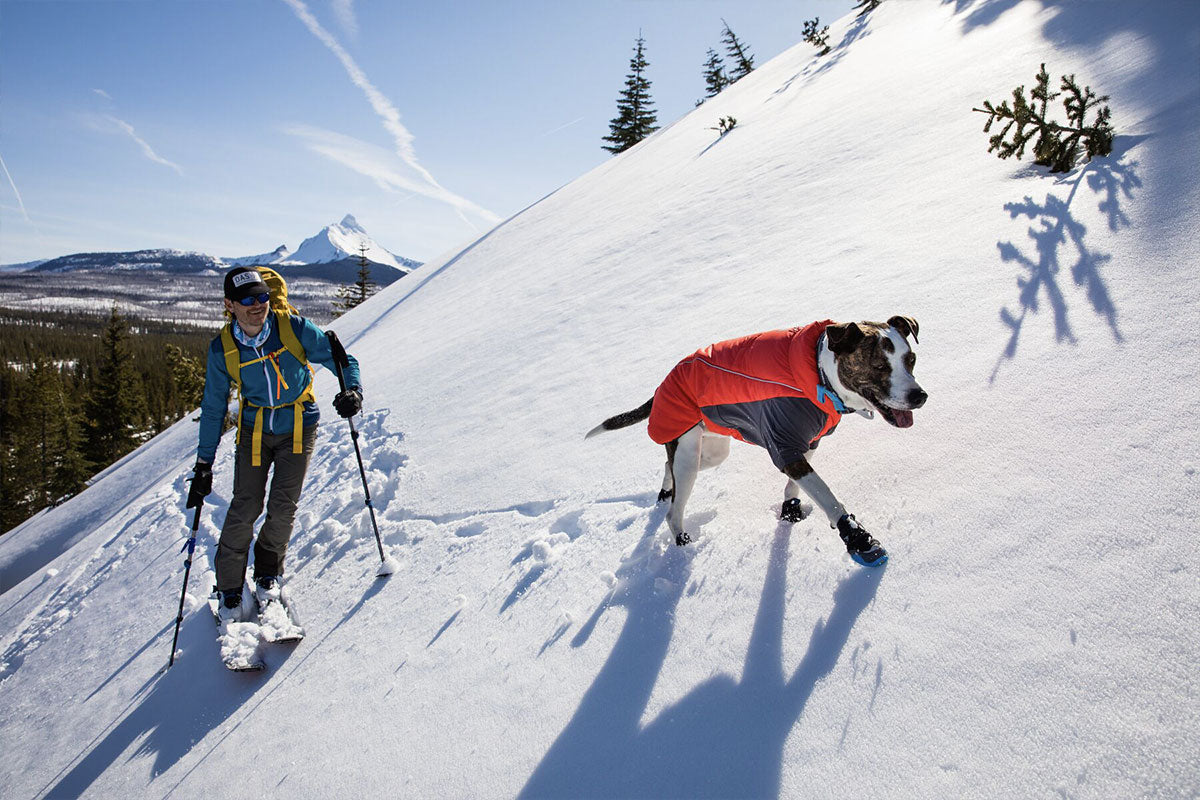
Fußverletzungen und Schnittwunden
Eine der häufigsten Verletzungen bei Hunden, die sich im Winter ins Hinterland wagen, sind Schnittwunden durch scharfe Skikanten. An den Pfoten von Hunden können auch Abschürfungen durch rauen Schnee und Eis, Reizungen durch Sand und Salz auf den Straßen, Schnitte an den Pfotenballen und eingerissene Nägel auftreten. Was wie eine geringfügige Verletzung aussieht, kann viel schwerwiegender werden, wenn Sie dadurch im Winter in der Wildnis nicht rechtzeitig zum Auto zurückkehren können. In solchen Situationen kann es sehr nützlich sein, ein kleines Erste-Hilfe-Set (siehe unten) für Ihren Hund dabei zu haben.
Anzeichen, auf die Sie achten sollten: Hinken oder Lahmheit ist das häufigste Anzeichen für Verletzungen an Füßen und unteren Gliedmaßen. Manchmal verursacht eine kleine Schnittwunde keine Lahmheit, aber Sie können Blut im Schnee bemerken. Wenn Ihr Hund hinkt, lassen Sie ihn von einem Freund festhalten und seine unteren Gliedmaßen und Füße sorgfältig untersuchen. Entfernen Sie Schnee zwischen den Pfotenballen und untersuchen Sie die Nägel. Wenn keine äußere Wunde oder eingerissene Kralle und kein Schnee zwischen den Zehen vorhanden ist, ist eine Verletzung des Weichgewebes (Sehne oder Band) möglich.
Behandlung: Bei Verletzungen oder Reizungen der Pfoten, Ballen oder Nägel entfernen Sie den Schnee zwischen den Zehen, trocknen Sie den Fuß, wenn möglich, und ziehen Sie einen Hundeschuh an die verletzte Pfote. Wenn Ihr Hund immer noch nicht auf dem Ast laufen will, sollten Sie zum Ausgangspunkt zurückkehren. Legen Sie bei Schnittwunden weiter oben an den Gliedmaßen einen sterilen Verband an (einfache Gaze reicht aus) und umwickeln Sie die Stelle mit „Vetrap“ (siehe Erste-Hilfe-Kasten). Beachten Sie, dass dieser Verband nur vorübergehend ist und nur maximal 2 Stunden lang getragen werden sollte. Suchen Sie sofort nach Ihrer Rückkehr nach Hause einen Tierarzt auf.
So beugen Sie vor: Die beste Methode, Schnittwunden an den Skikanten zu vermeiden, besteht darin, Ihren Hund darauf zu trainieren, hinter der Gruppe in sicherem Abstand von den Skiern bergab zu laufen. Wenn Sie auf Wegen laufen, die mit Sand oder Salz bestreut sind, sind Hundeschuhe eine gute Methode, um Reizungen der Pfotenballen vorzubeugen. Ebenso helfen Schuhe wie die Polar Trex™ Dog Boots, Schnee- und Eisbildung zwischen den Zehen zu verhindern. Das Fell zwischen den Zehen kurz zu halten und Vaseline oder eine handelsübliche Hundepfotensalbe (wird von Hundeschlittenführern verwendet) aufzutragen, bevor Sie für den Tag aufbrechen, kann ebenfalls helfen, Schnee abzuweisen.
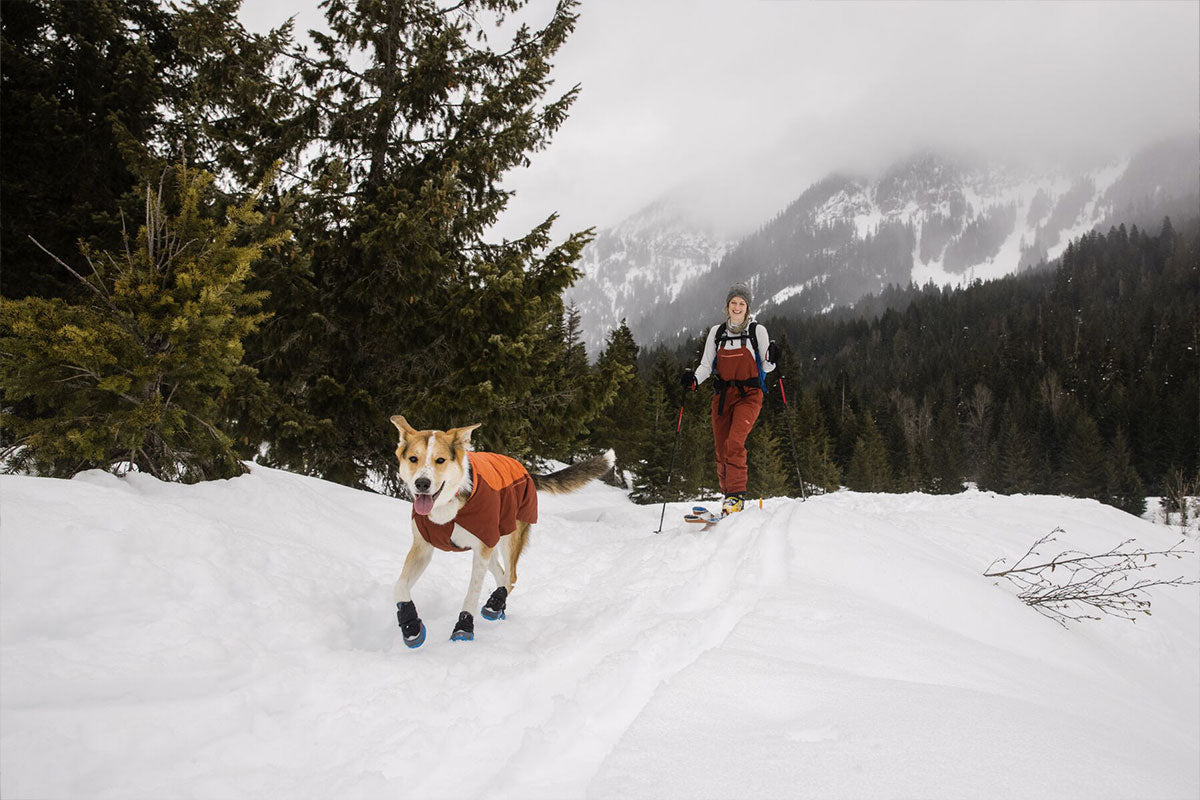
Einen Ausstiegsplan haben
Denken Sie zum Schluss noch an das schlimmste Szenario für Ihren Hund: Er ist verletzt und kann nicht zum Ausgangspunkt zurücklaufen. Wie sieht Ihre Ausstiegsstrategie aus? Können Sie oder jemand aus Ihrer Gruppe Ihren Hund hinaustragen ? Es kann sehr hilfreich sein, Ihren größeren Hund darauf zu trainieren, über Ihren Schultern getragen zu werden. Bei kleinen und mittelgroßen Hunden kann ein gut sitzendes Geschirr mit breitem Brustteil und Griff das Tragen erheblich erleichtern. Ein Geschirr ist auch ideal, wenn Ihr Hund im tiefen Schnee steckenbleibt oder Hilfe braucht, um aus einer prekären Lage herauszukommen!
Ich hoffe, Sie fanden diese Informationen hilfreich. Sie können gerne Fragen stellen oder unten einen Kommentar hinterlassen. Möge Ihr Winter glücklich, sicher und voller Lächeln und wedelnder Schwänze sein!
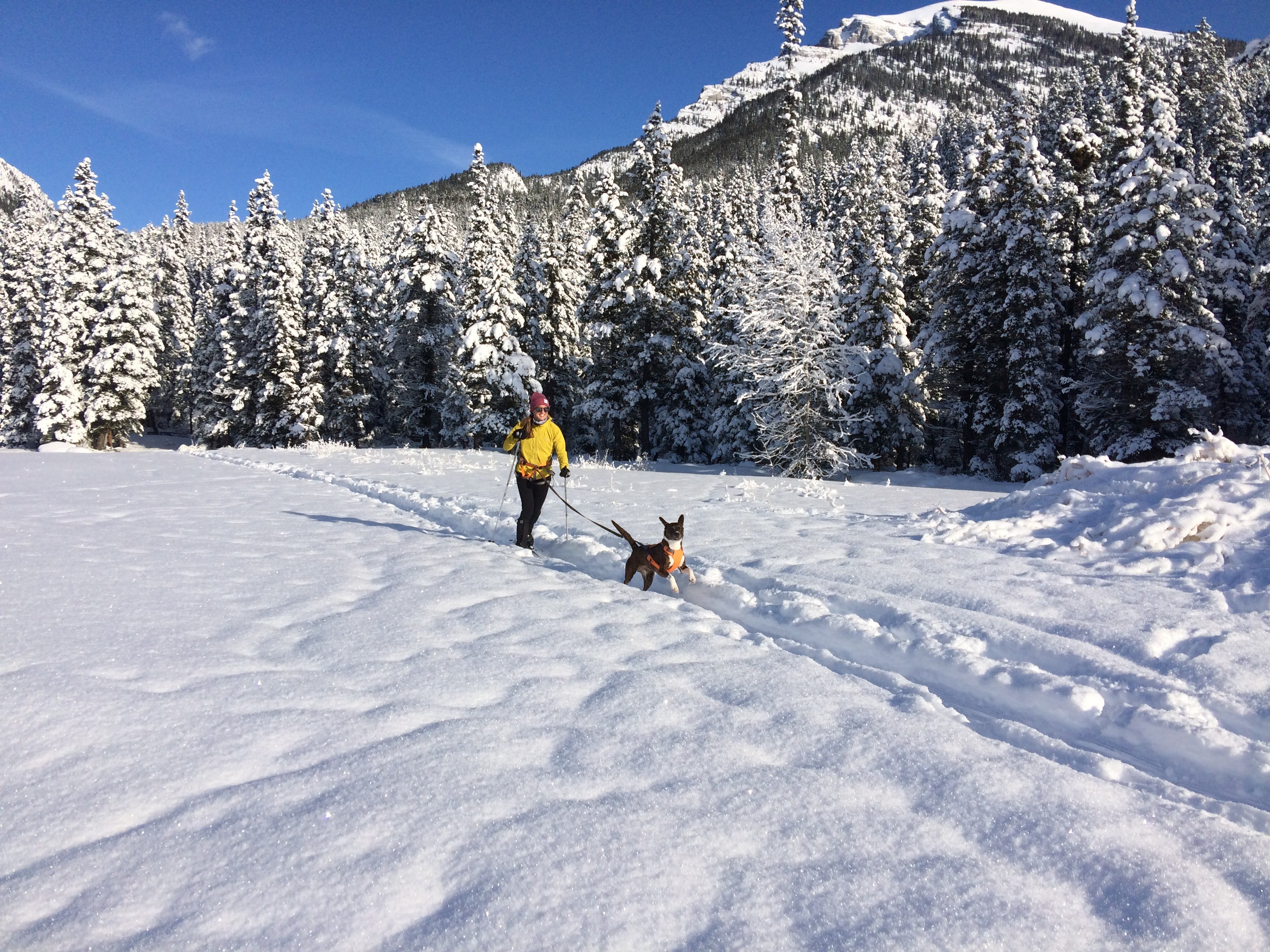
Grundausstattung und Erste-Hilfe-Set für Pulverschnee-Jäger
Mantel (plus Ersatzmantel für längere Abenteuer)
Wasser
Energiereiche Hundesnacks
Schiene (Aluminium oder Kunststoff, normalerweise in Erste-Hilfe-Sets für Menschen enthalten)
„Vetrap“-Verband (farbiger, selbsthaftender, anpassbarer Verband, in Tierkliniken erhältlich)
Steriler Verband oder Gaze zum Auflegen auf die Wunde
Vaseline oder Hundepfotensalbe
Bandage oder Halstuch zum Anlegen eines Maulkorbs (jeder Hund, der Schmerzen hat, kann beißen)
__
Dr. Bronwyn Fullagar ist Fachärztin für Veterinärchirurgie und lebt in Canmore, Alberta. Wenn sie nicht in der Klinik ist, erkundet sie das Hinterland der kanadischen Rocky Mountains auf Skiern oder zu Fuß mit ihrem begeisterten Berghund Arnie. Sie können ihre tierärztlichen Abenteuer unter @drbronfullagar verfolgen.
